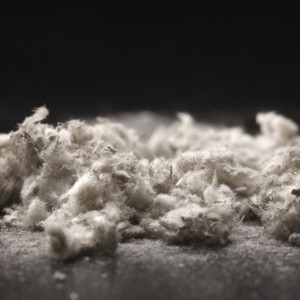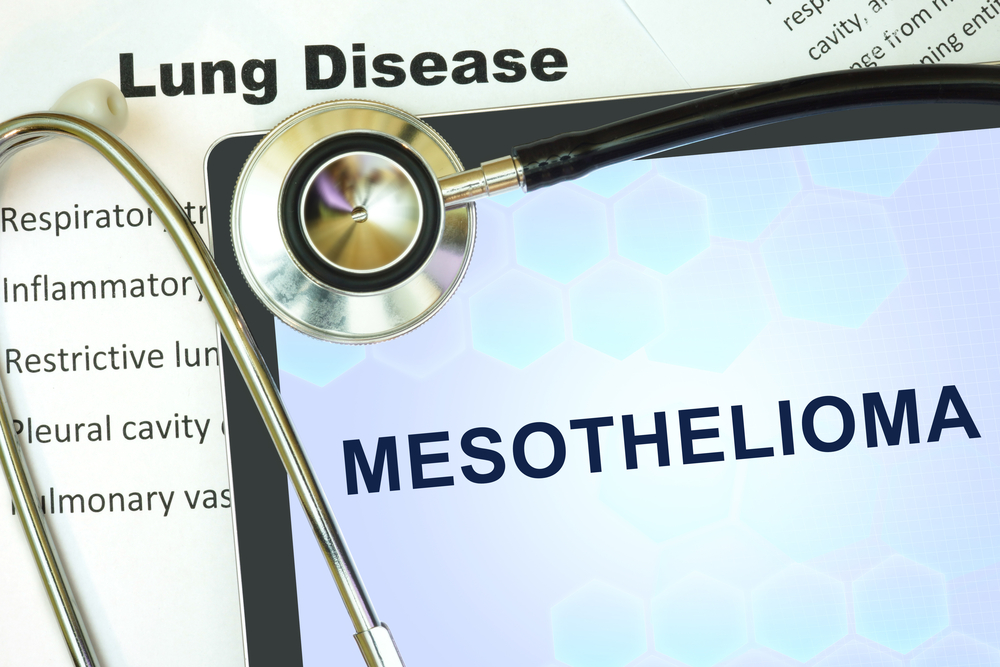 Higher than normal rates of malignant mesothelioma in the southern Nevada counties of Clark and Nye found in women and in persons younger than age 55 years old are likely attributable to natural deposits of carcinogenic mineral fibers in the region. These carcinogenic minerals include actinolite asbestos, erionite, winchite, magnesioriebeckite and richterite.
Higher than normal rates of malignant mesothelioma in the southern Nevada counties of Clark and Nye found in women and in persons younger than age 55 years old are likely attributable to natural deposits of carcinogenic mineral fibers in the region. These carcinogenic minerals include actinolite asbestos, erionite, winchite, magnesioriebeckite and richterite.
A new research paper published in the Journal of Thoracic Oncology, the official journal of the International Association for the Study of Lung Cancer (IASLC), suggests that these elevated malignant mesothelioma rates are linked to exposure of the affected persons to carcinogenic mineral fibers in the environment.
The paper, entitled “The presence of asbestos in the natural environment is likely related to mesothelioma in young individuals and women from Southern Nevada“ (Journal of Thoracic Oncology: Published Ahead-of-Print doi: 10.1097/JTO.0000000000000506), is coauthored by Francine Baumann; Brenda J. Buck; Rodney V. Metcalf; Brett T. McLaurin; Doug Merkler; and Michele Carbone.
The coauthors note that inhalation of asbestos and other mineral fibers are known causes of malignant mesothelioma (MM) and lung cancers. In settings where there is occupational exposure to asbestos, MM occurs at rates roughly 4 to 8 times more frequently in men than in women, at a median age of 74 years, while the researchers found that exposure to asbestos in the general environment causes the same number of MMs in men and women, and at younger ages.
The researchers studied the geology of Nevada to identify mineral fibers in the environment, and compared MM mortality in different Nevada Counties during the 1999-2010 period, cross-referenced to sex and age groups.
The scientists identified the natural presence of carcinogenic minerals in Nevada, including actinolite asbestos, erionite, winchite, magnesioriebeckite and richterite, and discovered that, compared with the US in general and in other Nevada counties, Clark and Nye counties, located in southern Nevada, had significantly higher MM incidence and disease onset occurring in younger individuals.
The investigators conclude that the elevated percentages of women and persons younger than 55 years old contracting MM, combined with a gender ratio of 1:1 in that age cohort, in light of the presence of naturally occurring asbestos, suggests that environmental exposure to carcinogenic mineral fibers in southern Nevada may be a contributing factor in some of these mesotheliomas.
The team recommends further research to assess environmental exposures, which should lead to development of strategies to minimize exposure, as the development of rural areas continues in Nevada, and to prevent MM and other asbestos-related diseases.
 Senior author of the paper and IASLC member Michele Carbone, a director at the University of Hawaii Cancer Center, is a pathologist with a unique perspective on the deadly cancer that is diagnosed in an estimated 3,000 Americans each year.
Senior author of the paper and IASLC member Michele Carbone, a director at the University of Hawaii Cancer Center, is a pathologist with a unique perspective on the deadly cancer that is diagnosed in an estimated 3,000 Americans each year.
Dr. Carbone leads a multi-disciplinary, international team of scientists in study of malignant mesothelioma, which is an aggressive and deadly form of cancer that affects the mesothelial lining of the lungs and internal chest wall and which has been strongly linked with exposure to certain mineral fibers such as asbestos and erionite. MM is difficult to diagnose in its early stages, and late stage mesothelioma is especially resistant to treatment. As global use of asbestos and other mineral fibers as construction and engineering materials continues to increase, development of improved diagnostic tools and therapies for mesothelioma requires critical attention.
While researching an article discussing genetic predisposition for mesothelioma, Dr. Carbone traveled to Turkey to view firsthand erionite-laden buildings there and dubbed them “houses of death.”
Dr. Carbone has studied MM in small villages of the Capadoccia, a region of Turkey where a devastating mesothelioma epidemic has been killing over half the population due to erionite exposure, and has traced the epidemic to erionite, which has been used there as an engineering material for a variety of construction purposes. Since 1997, Dr. Carbone has conducted research in Cappadocia, and his work there led the Turkish Ministry of Health to build two erionite-free villages that will greatly reduce the risk of mesothelioma in this area.
The studies in Cappadocia also revealed genetic susceptibility to this malignancy in certain families, and more recently Dr. Carbone and his team discovered that families whose members carry germline mutations in the BAP1 gene are affected by mesothelioma, uveal melanoma and possibly other cancers. The possibility of using genetic testing for BAP1 mutations to identify individuals at high risk for mesothelioma is currently being investigated.
Erionite is also prevalent in North Dakota’s Killdeer Mountains, where Dr. Carbone and his team discovered high levels of erionite in the gravel used to pave more than 300 miles of roads, driveways, and parking lots in western parts of North Dakota. People living in that area have exposure to erionite similar to those found in some villages in Cappadocia, a finding that has led to EPA intervention and preventive measures that are being adopted to reduce erionite exposure and to screen the demographic cohorts at greatest risk of contracting mesothelioma.
Dr. Carbone’s Cappadocia and North Dakota findings were published in the Proceedings of the National Academy of Sciences journal PNAS in a 2011 paper entitled “Erionite exposure in North Dakota and Turkish villages with mesothelioma” (vol. 108 no. 331361813623, dpi: 10.1073/pnas.1105887108) coauthored by Dr.Carbone with Y. Izzettin Baris, Pietro Bertino, Brian Brass, Sabahattin Comertpay, A. Umran Dogan, Giovanni Gaudino, Sandro Jube, Shreya Kanodi, Charles R. Partridge, Harvey I. Pass, Zeyana S. Rivera, Ian Steele, Murat Tuncer, Steven Way, Haining Yang, and Aubrey Miller, variously of the University of Hawaii Cancer Center, the Department of Molecular Biosciences and Bioengineering, and the John A. Burns School of Medicine at the University of Hawaii, Honolulu; Hacettepe University, Ankara, Turkey; the United States Environmental Protection Agency, Denver, Colorado; the Department of Earth Sciences at King Fahd University of Petroleum and Minerals, Dhahran, Saudi Arabia; the Department of Chemical and Biochemical Engineering, University of Iowa, Iowa City; the NYU Langone Medical Center and Cancer Center at New York University, New York, NY; the Department of the Geophysical Sciences at the University of Chicago, Chicago, Illinois; the Turkish Ministry of Health, Ankara, Turkey 06434; and the National Institute of Environmental Health Sciences, National Institutes of Health, Bethesda, Maryland.
The researchers note that erionite deposits are found in at least 12 US states, and that after preliminary exploration, they focused their investigation on Dunn County, North Dakota (ND), where much of the erionite use in paving was concentrated. To determine potential health implications, the team compared erionite from the Turkish villages to that from ND, evaluating airborne point exposure concentrations, analyzing the physical and chemical properties of erionite, and examining the hallmarks of mesothelial cell transformation in vitro and in vivo.
They determined that airborne erionite concentrations measured in ND along roadsides, indoors, and inside vehicles, including school buses, equaled or exceeded concentrations in measured at Boyali Turkey, where 6.25 percent of all deaths are caused by MM. With the exception of outdoor samples along roadsides, ND concentrations were lower than those measured in Turkish villages with MM mortality ranging from 20 to 50%. The physical and chemical properties of erionite from Turkey and ND are also found to be very similar and showing identical biological activities.
The scientists observe that considering the known 30-to-60-year latency for MM development, there is reason for concern about increased risk in ND in the future, and that their findings indicate that implementation of novel preventive and early detection programs in ND and other erionite-rich areas of the United States, similar to efforts currently being undertaken in Turkey, is warranted.
Dr. Carbone concludes that “further research is needed, including epidemiological, geological, mineralogical and health-based personal exposure studies in order to characterize the residential and occupational history of the malignant mesothelioma cases we studied, to highlight the highest risk areas within Clark and Nye counties, to identify the type of fibrous minerals and their precise distribution throughout Nevada, and to identify the activities responsible for the release of fibers in the air, which may be the cause of some of the malignant mesothelioma in this region.”
Dr. Carbone and his team have demonstrated that mineral fibers and viruses are co-carcinogens in the process of transformation of human mesothelial cells into cancerous cells, and have found that SV40, a DNA tumor virus found in contaminated human polio vaccines and which causes mesothelioma in animals, also causes malignant transformation of human mesothelial cells in tissue cultures and shows up in some mesothelioma biopsies. Dr. Carbone’s work has elucidated the molecular mechanisms that lead from SV40 infection to the formation of mesothelioma.
The manner by which mineral fiber exposure leads to mesothelioma has remained a mystery for many years. It is well-established that asbestos fibers do damage and kill mesothelial cells with which they come in contact, so how do these cells survive to become cancer cells? Dr. Carbone and his associate Dr. Yang have recently found that asbestos exposure triggers secretion of HMGB1 and TNF that make mesothelial cells somewhat resistant to asbestos toxicity; and potentially allowing asbestos-genetically damaged mesothelial cells to survive and become cancerous.
A clinical trial is currently being developed to test drugs that block the effects of HMGB1 and TNF- in a high-risk mesothelioma population. Dr. Carbone’s team has also identified new biomarkers of early stage mesothelioma, which are also currently being tested for their usefulness in clinical applications. The most recent work by Dr. Carbone and his has colleagues revealed that individuals that carry germline BAP1 mutations have less aggressive malignancies and that mesotheliomas are polyclonal tumors.
For more information about The International Association for the Study of Lung Cancer and its activities, visit:
http://www.iaslc.org
Sources:
The International Association for the Study of Lung Cancer
University of Hawaii Cancer Center
The Journal of Thoracic Oncology
Proceedings of the National Academy of Sciences journal PNAS
Image Credits:
University of Hawaii Cancer Center


